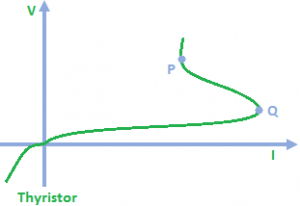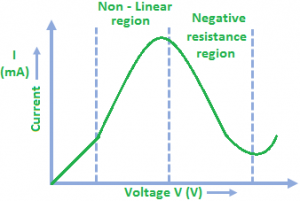Limitations of Ohm’s Law
In the year 1820 a French physicist, Andre Ampere made many discoveries on the nature of electricity. While a German physicist, Georg Ohm showed that the flow of an electric current through a wire depended on its ‘resistance’ and the potential difference between its ends.
Ohm’s law is not a fundamental law of nature. There are a number of commonly used circuit elements which do not obey this law.
They have one or more of the following properties:
- V depends on I non-linearly.
- The relationship between V and I depends on the sign of V for the same absolute value of V.
- The relation between V and I is non-unique, that is, for the same current I, there is more than one value of voltage V.

The graph shows the (V-I) graph of a vacuum diode.
A vacuum tube is used to convert high voltage alternating current to direct current.
The behaviour of semiconductor diodes is somewhat different but still strongly asymmetric. It exhibits properties 1 and 2 that are listed above. For a diode of either type, a positive potential difference V will cause a current to flow in the positive direction, but a potential difference of the other sign will cause little or no current. Hence, a diode acts like a one-way valve in a circuit, and is then called a rectifier.

The graph shows the characteristics of a device known as a Thyristor, which consists of four alternate layers of P and n-type semiconductors. We find that V is not directly proportional to I. All the properties 1 to 3 are seen and the region (PQ) is still more interesting. Here the current carried by the device increases as the voltage decreases. Other examples of non-ohmic devices are electrolytes, thermistors.
A more fundamental breakdown of Ohm’s Law occurs in certain alloys at very low temperatures. It is observed that the resistance of a uniform wire made of the alloy of length 2l is more than twice the resistance of the wire of length l. This can be understood in terms of the wave character of electrons, which leads to interference effects. This increases the resistance beyond what would be if electrons flowed like water.

